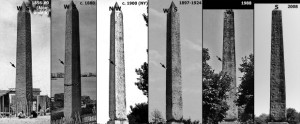“A place belongs forever to whoever claims it hardest, remembers it most, wretches it from itself, shapes it, renders it, loves it so radically that he remakes it his his own image.” — Acclaimed author and journalist, Joan Didion
Might one apply the sentiment expressed above to art and artifact? Centuries of exploration and conquest have divided the earth’s great artistic treasures. One finds Nefertiti’s bust in Berlin, Germany; the Stele upon which a long-ago scribe etched Hammurabi’s code in Paris, France; the Elgin Marbles of Ancient Greece in London, England; and an ancient Egyptian Obelisk, often called Cleopatra’s Needle atop the crest of small hill in New York City’s Central Park. Upon claiming the aforementioned artifact as their own, each country has loved the artifact, inevitably intertwining the histories of the artifact, its nation of origin, and its nation of display. Which nation then, if any, may claim these artifacts of great international significance as its own? Might artifacts carry the most significance in situ, that is, in their original national context? Or rather, might all citizens of the world benefit from the expansive and vast collections of certain encyclopedic museums such as the British Museum of London or Le Louvre of Paris?
In their respective articles,”Send Back the Obelisk” and “Culture War: The Case Against Repatriating Museum Artifacts, Chas Chaillé Long and James Cuno present alternative answers to questions presented above. Long, who cites the Cleopatra’s Needle as his case study insists, “Cleopatra’s Needle upon our shores can never be other than a reproach” (411). He speculates upon the coercive nature of the obelisk’s acquisition; insists upon the great cultural importance of the obelisk to both the landscape of Alexandria and the citizens of Egypt; and admonishes the irresponsibility of exposing an ancient artifact to an unfamiliar climate. Ultimately, Long pleas for the return of the obelisk, writing “This would be an act worthy of generous people. It would be in the way of ‘the eternal fitness of things’” (412). Alternatively, Cuno argues the potential dangers of a nation’s use of “ancient cultural objects to affirm continuity with a glorious and powerful past as a way of burnishing their modern political image.” According to Cuno, “These arguments amount to protectionist claims on culture.” He proposes instead that antiquities shed their narrow identities of origin in favor of expressing “the guiding principles of the world’s great museums: pluralism, diversity, and the idea that culture shouldn’t stop at borders.” He insists that worldly citizens recognize cultural property as “the legacy of human-kind and not of the modern nation-state, subject to the political agenda of its current ruling elite” (120). As theses two arguments convey,—moral, idealistic, and, inevitably, legal—complexities abound. However, in attempting to untangle these complexities for even a moment, a succinct moral argument manifests quite clearly: return the stolen goods.
Long describes the displacement of Cleopatra’s Needle as vandalism. He describes
“the general cry of indignation which arose in all of Egypt at the profanation-vandalism to be consummated” (411). Cuno, however, neglects to mention a nation’s connection to its ancestral legacy beyond that of its political leader’s aims for glory. Cuno, too, conflates an object’s legacy within its nation of origin with a necessarily narrow identity. He writes, “In an era of globalization, that is nonetheless marked by a resurgent nationalism and sectarianism, antiquities and their history should not be used to stoke such narrow identities” (120). One may argue instead that increasing globalization and the accompanying increased access to travel, knowledge, and correspondence grants antiquities remaining in situ, or within a museum in their culture and / or country of origin, a global audience—as a page or chapter in an encyclopedia a whole world wide. Futhermore, Cuno, concerned with the governmental motives of antiquities’ nations of origins, neglects to address the potential governmental motives of the nation of display. Such an omission inevitably favors the Western World. Therefore, one may fairly critique Cuno’s assertions as self-interested or paternalistic.
Of encyclopedic museums, Cuno writes that these institutions encourage “understanding the intertwined nature of different cultures that are more similar than they are different, the result of centuries of contract through trade, pilgrimage, and conquest” (122). To recognize similarities of of the human spirt cross-culturally undoubtedly yields valuable understanding. However, one need not visit an encyclopedic museum and gaze upon the questionably-acquired antiquities of another nation to gain such an insight. Encyclopedic museums possess vast collections of legally acquired cultural art and artifact.
Significantly, in returning stolen antiquities, a nation may attempt to atone for the cruelties and robberies of its past. As a preemptive response, Cuno writes, “Empire is a fact of history” (123). He is right. Yet, to what extent must nations cling to old empires—so often cruel and egocentric? Why, too, according to Cuno, must nations honor the histories of empire over the histories of ancient civilizations? The likely answer: to condone prolonged theft well into the future. Might nations better serve civilizations, ancient and future, through the repatriation of stolen artifacts. As Long writes, “This would be an act worthy of a generous people. It would be in the way of ‘the eternal fitness of things’” (412).
Certainly, one must not over-simplify the many cultural and legal considerations presented in the above arguments—likely to continue for decades, even centuries amongst nations. Yet, one may view ownership of antiquities through a moral lens of startling simplicity—first, do not steal and second, when in possession of stolen goods, return promptly to the rightful owner. Far from home, the eyes of Cleopatra’s Needle must sometimes search for home—for the people who may love her best and change her least.
